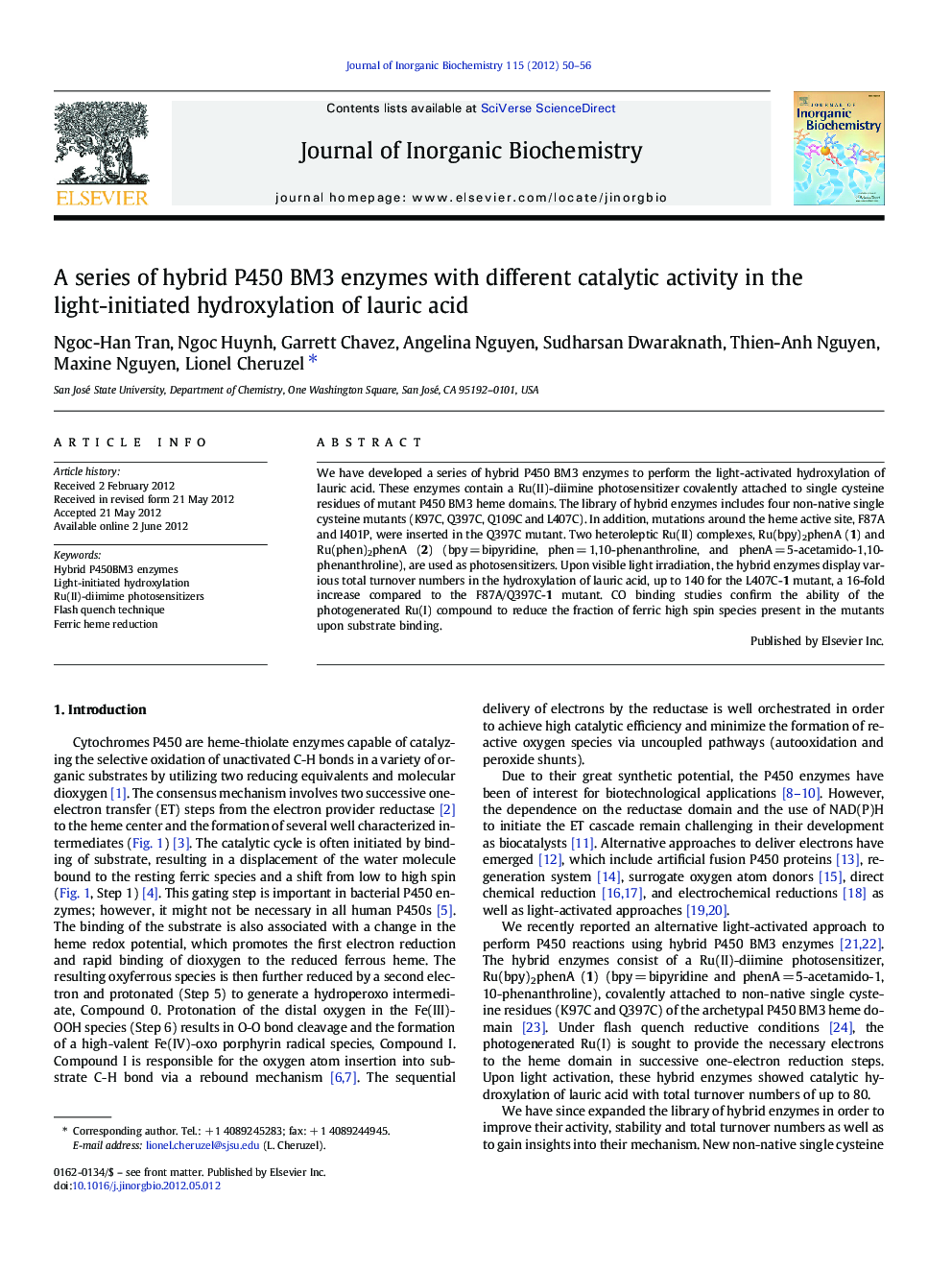| Article ID | Journal | Published Year | Pages | File Type |
|---|---|---|---|---|
| 1316375 | Journal of Inorganic Biochemistry | 2012 | 7 Pages |
We have developed a series of hybrid P450 BM3 enzymes to perform the light-activated hydroxylation of lauric acid. These enzymes contain a Ru(II)-diimine photosensitizer covalently attached to single cysteine residues of mutant P450 BM3 heme domains. The library of hybrid enzymes includes four non-native single cysteine mutants (K97C, Q397C, Q109C and L407C). In addition, mutations around the heme active site, F87A and I401P, were inserted in the Q397C mutant. Two heteroleptic Ru(II) complexes, Ru(bpy)2phenA (1) and Ru(phen)2phenA (2) (bpy = bipyridine, phen = 1,10-phenanthroline, and phenA = 5-acetamido-1,10-phenanthroline), are used as photosensitizers. Upon visible light irradiation, the hybrid enzymes display various total turnover numbers in the hydroxylation of lauric acid, up to 140 for the L407C-1 mutant, a 16-fold increase compared to the F87A/Q397C-1 mutant. CO binding studies confirm the ability of the photogenerated Ru(I) compound to reduce the fraction of ferric high spin species present in the mutants upon substrate binding.
Graphical abstractIn a series of hybrid P450 BM3 enzymes containing Ru(II)-diimine photosensitizers, a 16-fold difference in total turnover numbers was obtained for the lauric acid hydroxylation upon visible light excitation. CO binding studies confirm the ability of the photogenerated Ru(I) compound to reduce the fraction of high spin ferric heme species.Figure optionsDownload full-size imageDownload as PowerPoint slideHighlights► Hydroxylation of lauric acid upon light activation using hybrid P450 BM3 enzymes. ► 16-fold difference in total turnover numbers obtained between the various mutants. ► Insight into the hybrid enzymes mechanism from CO binding studies. ► Reduction of high spin ferric heme species by the photogenerated Ru(I) compound.
